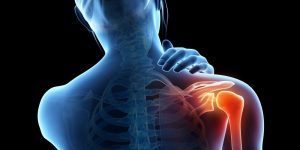Understanding The Doshas And Joint Health: An Ayurvedic Perspective
Ayurveda is a traditional healing system that originated in India over 5,000 years ago. It is based on the belief that optimal health is achieved through a balance of the mind, body, and spirit.
According to Ayurveda, each individual has a unique constitution or “prakriti,” which is determined by the three doshas: vata, pitta, and kapha. These doshas represent different combinations of the five elements (ether, air, fire, water, and earth) and are responsible for various functions in the body.
Vata is associated with movement and is responsible for the mobility of the joints. Pitta is associated with digestion and metabolism and plays a role in maintaining the health of the connective tissues. Kapha is associated with structure and stability and is responsible for lubricating the joints.
When these doshas are in balance, the body is healthy and functions optimally. However, when there is an imbalance in one or more of the doshas, it can lead to health issues such as joint pain and stiffness. For example, an excess of vata can lead to dryness and stiffness in the joints, while an excess of kapha can lead to swelling and inflammation.
Understanding the doshas and their role in joint health is an essential aspect of Ayurveda. By identifying imbalances and working to restore balance through various Ayurvedic practices, individuals can support joint health and reduce the risk of joint pain and stiffness.
Vata Dosha And Joint Health

Vata dosha is responsible for movement in the body, including the movement of the joints. It is composed of the elements of air and ether, which are light, mobile, and dry. When vata is in balance, it promotes flexibility and agility, but when it is imbalanced, it can cause dryness and stiffness in the joints.
Imbalances in vata dosha can be caused by various factors, such as a sedentary lifestyle, excessive exercise, stress, and a diet that is low in healthy fats. When vata is imbalanced, it can lead to joint pain, stiffness, and cracking sounds. Additionally, vata imbalances can cause the accumulation of toxins in the joints, leading to inflammation and further exacerbating joint pain.
Ayurvedic treatments can help balance vata and support joint health by addressing the root cause of the imbalance. Some effective Ayurvedic treatments for vata imbalances include:
- Abhyanga : a massage with warm oil that helps to nourish the joints and reduce dryness.
- Basti : an Ayurvedic enema that helps to remove toxins from the body and reduce inflammation.
- Shirodhara : a therapy that involves pouring warm oil on the forehead to calm the mind and nervous system, which can help reduce stress and promote relaxation.
- Use of warming spices and herbs, such as ginger, turmeric, and cinnamon, in cooking or as supplements can help to balance vata and reduce inflammation.
Pitta Dosha And Joint Health
Pitta dosha is responsible for metabolism and digestion in the body. It is composed of the elements of fire and water, which are hot, sharp, and penetrating. When pitta is in balance, it promotes healthy digestion and metabolism, but when it is imbalanced, it can cause inflammation and heat in the body.
Imbalances in pitta dosha can be caused by various factors, such as a diet that is high in acidic foods, exposure to toxins, and excessive exposure to the sun. When pitta is imbalanced, it can cause joint pain, inflammation, and heat in the joints, leading to discomfort and reduced mobility.
Ayurvedic treatments can help balance pitta and support joint health by addressing the root cause of the imbalance. Some effective Ayurvedic treatments for pitta imbalances include:
- Cooling herbs and spices : such as coriander, fennel, and cilantro, which can help reduce inflammation and balance pitta.
- Pitta-balancing diet : a diet that is rich in cooling and hydrating foods, such as fresh fruits and vegetables, can help reduce inflammation and support joint health.
- Pranayama : breathing exercises that can help reduce stress and balance pitta.
- Application of cooling herbal oils or gels, such as aloe vera, on the joints can help reduce inflammation and heat.
Kapha Dosha And Joint Health
Kapha dosha is responsible for stability, structure, and lubrication in the body. It is composed of the elements of earth and water, which are heavy, cool, and moist. When kapha is in balance, it promotes healthy joint lubrication and stability, but when it is imbalanced, it can cause joint stiffness, swelling, and heaviness.
Imbalances in kapha dosha can be caused by factors such as a sedentary lifestyle, a diet that is high in sweet or oily foods, and a lack of physical activity. When kapha is imbalanced, it can cause joint stiffness, swelling, and heaviness, leading to reduced mobility and discomfort.
Ayurvedic treatments can help balance kapha and support joint health by addressing the root cause of the imbalance. Some effective Ayurvedic treatments for kapha imbalances include:
- Dry heat therapy : using a dry sauna, heat lamp or warm compresses to help stimulate circulation and promote joint mobility.
- Stimulating herbs and spices : such as ginger, turmeric, and black pepper can help stimulate circulation and reduce stiffness.
- Kapha-balancing diet : a diet that is low in sweet and oily foods, and high in warming and stimulating foods such as ginger and black pepper, can help reduce kapha and support joint health.
- Regular physical activity : exercises that stimulate circulation and improve joint mobility, such as yoga, can help balance kapha and improve joint health.
Ayurvedic Treatments For Balancing The Doshas And Supporting Joint Health
Ayurveda offers a holistic approach to balancing the doshas and supporting joint health through various treatments, including dietary modifications, lifestyle changes, and herbal medicine. These treatments can help address the root cause of imbalances and promote overall wellness.
- Diet: Ayurveda emphasizes the importance of a balanced diet to support overall health and balance the doshas. For joint health, Ayurvedic practitioners may recommend a diet that is low in processed foods and high in whole, fresh foods.They may also suggest incorporating warming spices like ginger, cumin, and turmeric, which have anti-inflammatory properties and can help reduce joint pain and swelling.
- Lifestyle Changes: Certain lifestyle changes can also help balance the doshas and support joint health. For example, practicing yoga and other gentle exercises can help improve circulation, increase flexibility, and reduce stress, which can all contribute to better joint health. Adequate sleep and stress management techniques like meditation and deep breathing exercises can also help balance the doshas and promote overall wellness.
- Herbal Medicine: Ayurvedic herbal medicine can be used to help balance the doshas and support joint health. For example, Ashwagandha is a popular Ayurvedic herb that can help reduce inflammation and support the immune system, while Guggulu can help reduce joint stiffness and promote healthy joints.
Conclusion
In conclusion, imbalances in the doshas can have a significant impact on joint health, with vata imbalances causing dryness and stiffness, pitta imbalances causing inflammation and heat, and kapha imbalances causing swelling and heaviness. Ayurvedic treatments offer a holistic approach to balancing the doshas and supporting joint health through dietary modifications, lifestyle changes, and herbal medicine. By incorporating these treatments into daily routines, individuals can reduce the risk of joint pain and stiffness, improve mobility, and promote overall wellness. It is important to consult with an Ayurvedic practitioner to create a personalized treatment plan that meets individual needs and promotes optimal health.




